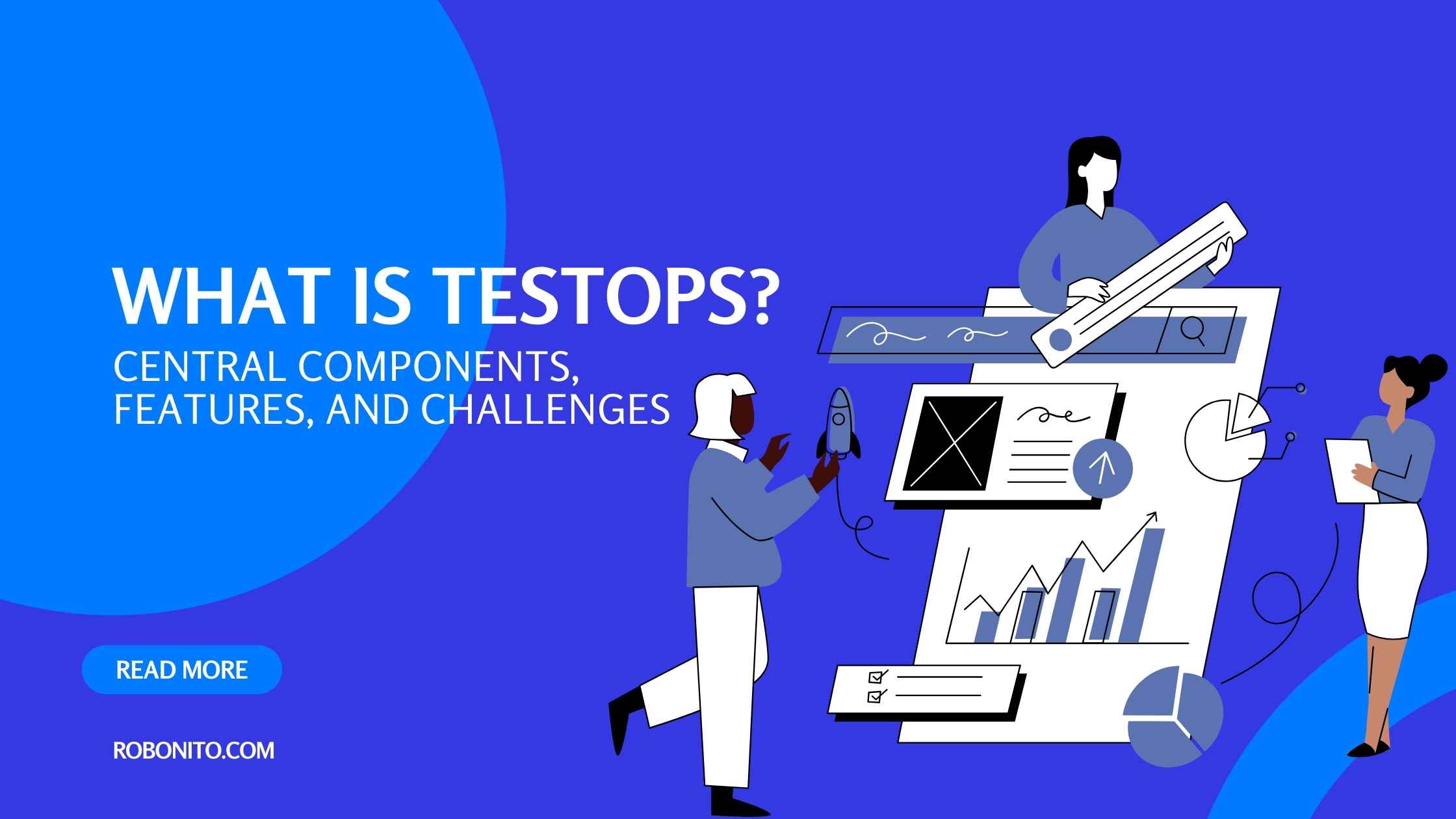In a software development world that’s moving faster each day, it’s hard to deliver consistently with high quality. Traditional testing techniques often have a hard time keeping pace, which causes blockages and slowdowns. This is where TestOps comes to the rescue. It offers a paradigm shift, it works as a game changer that boosts efficiency, teamwork, and overall testing effectiveness.
As software applications get more and more complex, and the need for rapid releases increases, the inadequacy of traditional testing practices becomes starkly obvious. TestOps solves this problem, as it provides a holistic approach that integrates testing into the development pipeline with a seamless experience.
Let’s find out how TestOps can satisfy the needs of today’s software development industry, optimize your workflows, and deliver great software products. Testing's future is TestOps - let's do this transformation together!
What Is TestOps?
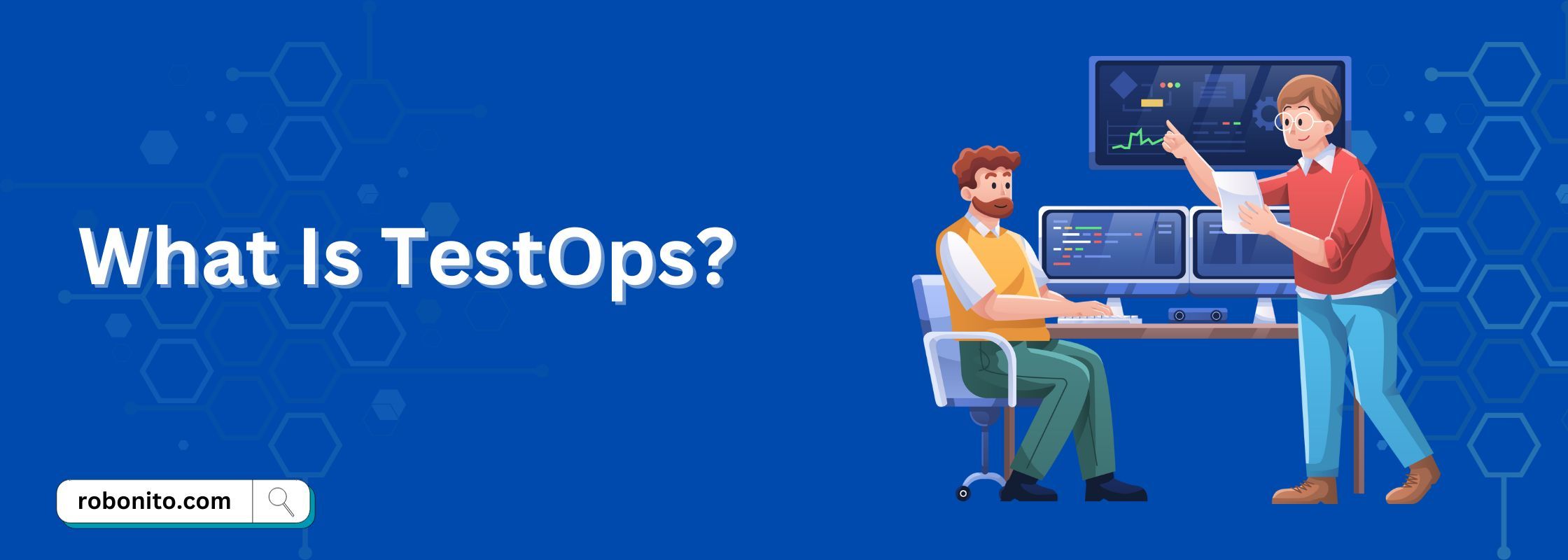
The term "TestOps," which stands for "Test Operations," refers to a contemporary method of software testing that incorporates collaboration, automation, and continuous testing techniques. It enables this by managing test environments, automating test execution, and encouraging communication between the development, testing, and operations teams. TestOps works to reduce development cycle delays and errors while ensuring that software systems are extensively tested, dependable, and ready for deployment.
Who Uses It?
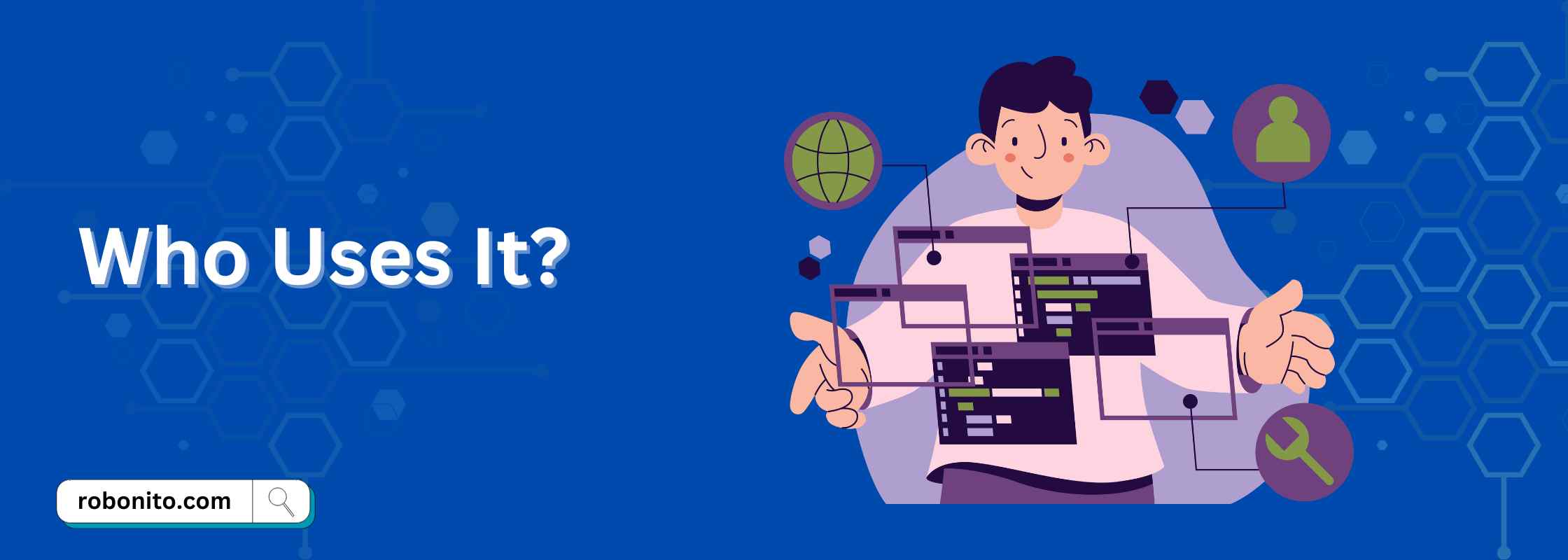
It's crucial to understand who benefits from this process before delving into the specifics of TestOps. A wider audience, including developers, testers, and DevOps experts, is catered to by TestOps, which is not exclusive to any particular group. Its collaborative nature fills the gap between these teams and promotes a unified testing strategy.
The four central components of TestOps
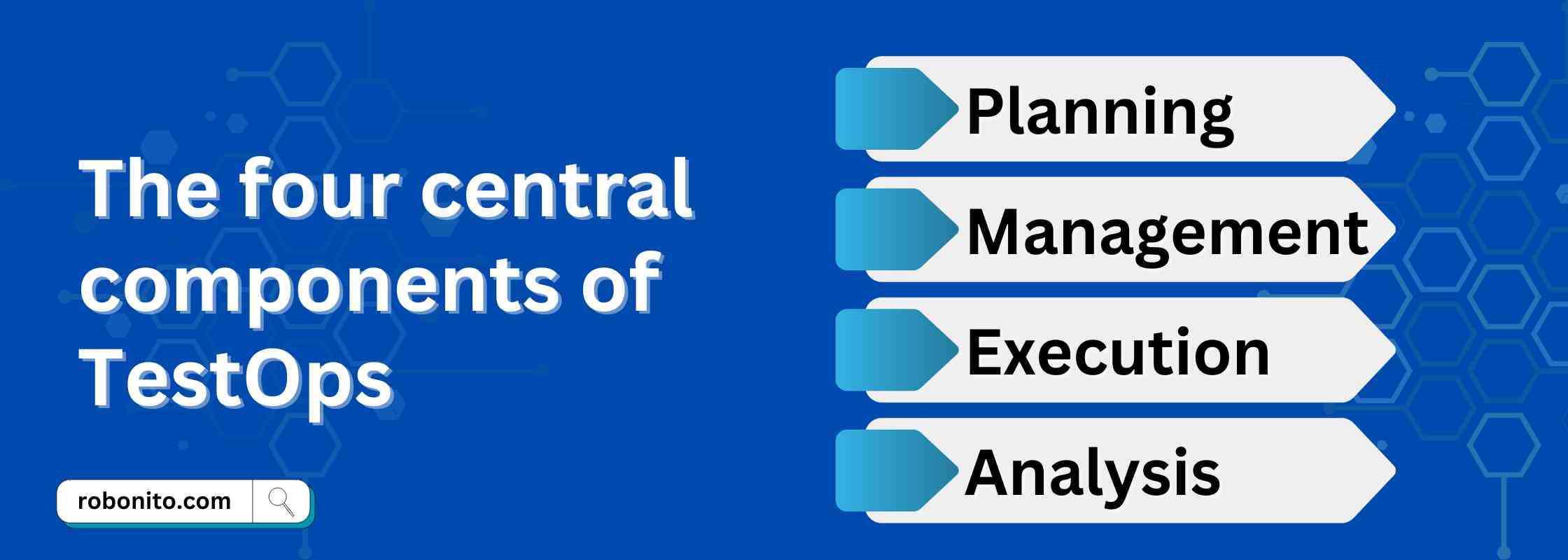
Planning:
Testing operations begin with careful preparation. This involves defining test objectives, scope, and strategies. A well-structured plan guarantees that every aspect of the program is thoroughly assessed and forms the basis for effective testing.
Management:
TestOps' fundamental component is effective test management. It includes planning test dates, allocating resources, and monitoring progress. The alignment of testing efforts with project objectives and deadlines is ensured by this component.
Execution:
The real work begins at the execution stage. By automating repetitive activities, enabling quicker feedback, and minimizing human error, TestOps streamlines the execution of tests. Here, automation is crucial since it makes it possible for tests to run smoothly throughout the DevOps pipeline.
Analysis:
A strong focus is placed on data-driven decision-making in TestOps. Teams learn from test findings, find bottlenecks, and pinpoint areas for improvement through an in-depth analysis. The constant optimization of testing efforts is made possible by this component.
TestOps Features
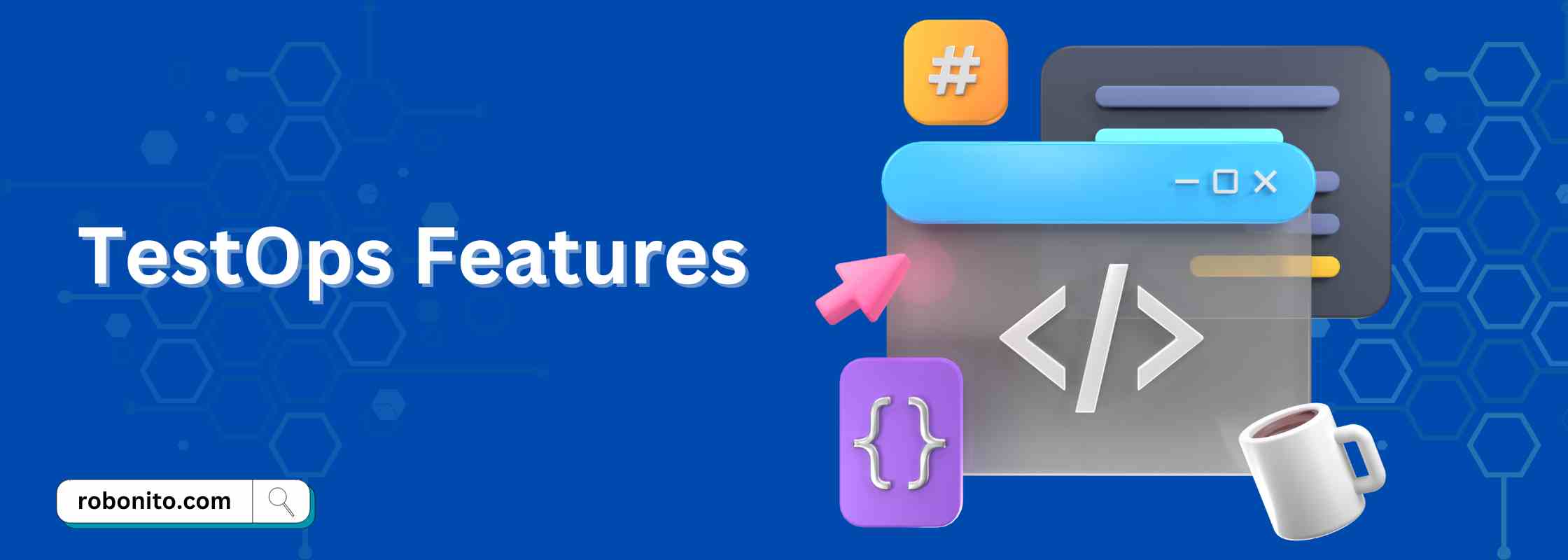
DevOps integration.
DevOps principles, which combine IT operations (Ops) and software development (Dev) into a single process, are effortlessly integrated with TestOps. Continuous testing and continuous delivery (CI/CD) in software development cannot be accomplished without this combination. It promotes a cross-functional, cooperative strategy by integrating testing with the development and deployment processes. With the help of this integration, every modification to the code is rigorously tested, aiding in the early discovery of bugs and enabling developers to receive feedback more quickly. The total software development lifecycle is accelerated as a result, which lowers the likelihood that serious flaws will enter production.
Enhanced test planning
TestOps improves test planning by offering an organized and team-based method for developing, maintaining, and carrying out test plans. Teams can manage resources effectively due to their tools for specifying test objectives, scope, and requirements. It is possible to organize and prioritize test cases so that the most important and high-impact tests are run first. It is simpler to confirm that every component of the program has been completely tested owing to the traceability features that are frequently included in test operations tools and connect test cases to user stories or requirements. Collaboration is improved through shared access to test plans and real-time updates, enabling all team members to stay on the same page.
Reduced execution time
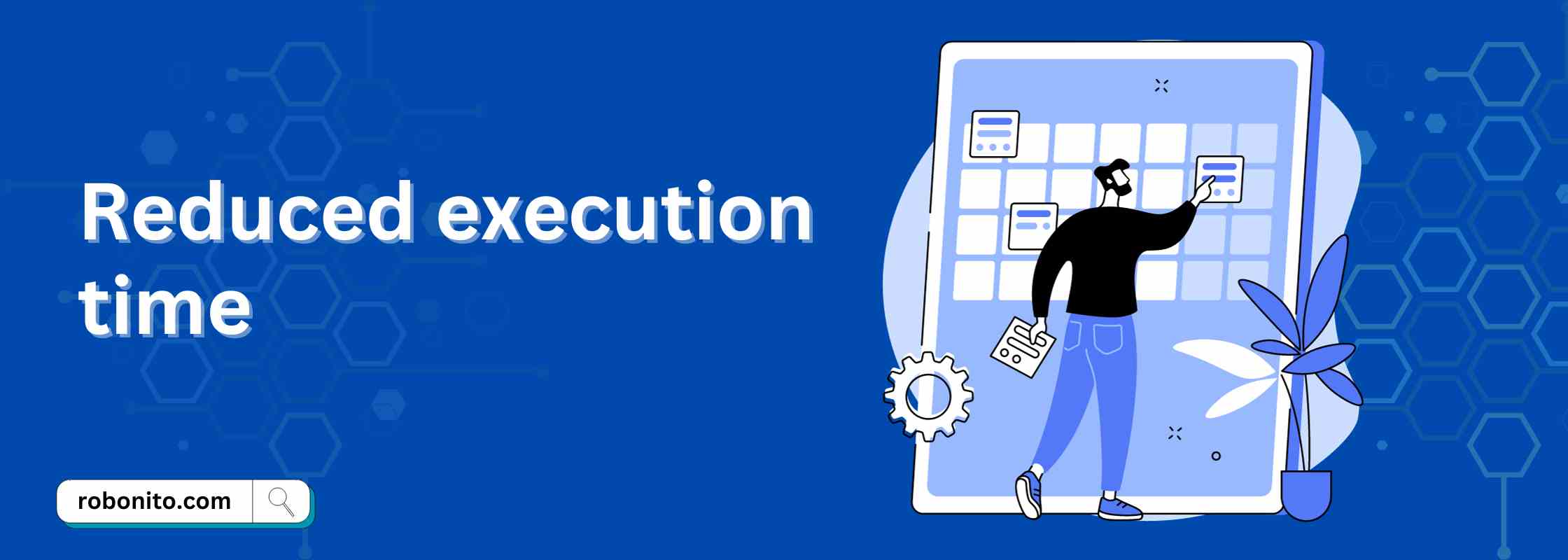
Through automation and parallel testing, TestOps significantly reduces the time it takes to run tests. Automated test scripts can run simultaneously on different test settings and configurations and can be executed considerably more quickly than manual testing. Testing doesn't become a bottleneck in the development process thanks to the use of TestOps technologies that improve test scheduling and execution. TestOps also reduces the need for extensive rework and debugging by identifying flaws early in the development cycle, speeding up the entire development cycle. In order to fulfill the needs of today's quick-paced development environments, software releases can now happen more frequently and reliably.
TestOps vs. DevOps
DevOps: Software development and IT operations are two distinct disciplines, and DevOps is a collection of principles that aims to eliminate this separation. From the production of code to deployment, it focuses on automating and optimizing the entire software development and delivery process. DevOps places a strong emphasis on collaboration, continuous integration, and continuous delivery to support more rapid and dependable software releases.
TestOps: On the other hand, TestOps is a subset of DevOps that is devoted exclusively to software testing. It incorporates testing procedures into the DevOps pipeline to ensure continuous testing throughout the development process. To eliminate bottlenecks in testing and accelerate the delivery of high-quality software, TestOps places a strong emphasis on automated testing, test environment management, and effective test planning.
While DevOps focuses on the software development lifecycle, TestOps is a subset that concentrates on testing. TestOps complements DevOps by enhancing the quality assurance process, ensuring the software meets quality standards before deployment.
Testing Challenges in the DevOps Environment
Continuous Testing Integration:
Challenge: It can be difficult to easily integrate testing into the DevOps pipeline. Planning and coordination are necessary to ensure that tests are run at every stage, from code commit through deployment.
Solution: DevOps teams should spend money on technologies that integrate with their CI/CD pipelines for test orchestration and automation. This makes sure that anytime there is a code change, tests are automatically executed. It is less labor-intensive and less likely that important tests will be missed when testing is incorporated into the development cycle.
Allocating resources and scalability
Problem: In the DevOps environment, it might be difficult to allocate the proper resources for testing and scale those resources as necessary, especially when managing a high number of tests.
Solution: Utilize cloud-based testing environments and containerization. By enabling on-demand resource allocation, these solutions ensure that testing environments are always available and can be scaled horizontally in order to fulfill rising testing demands. The use of resources is optimized, and infrastructure expenses are decreased.
What are the types of Testings covered in it?
Mobile Testing: This testing ensures that mobile applications (apps) work correctly on various mobile devices and platforms like Android and iOS. It includes testing for usability, performance, compatibility, and security on smartphones and tablets.
Web Application Testing: Web application testing is about testing the functionality, performance, and security of websites and web-based applications. Testers ensure that web app works across browsers, operating systems, and screen sizes to ensure a consistent user experience.
API Testing: Testing of Application Programming Interfaces (APIs) examines the exchange of information between various software services or components. Evaluating the data transfer, request-response, and error-handling processes, ensures that APIs work as intended. API testing ensures the reliability and accuracy of data transfer between systems, facilitating seamless integration between various software components.
Benefits of TestOps
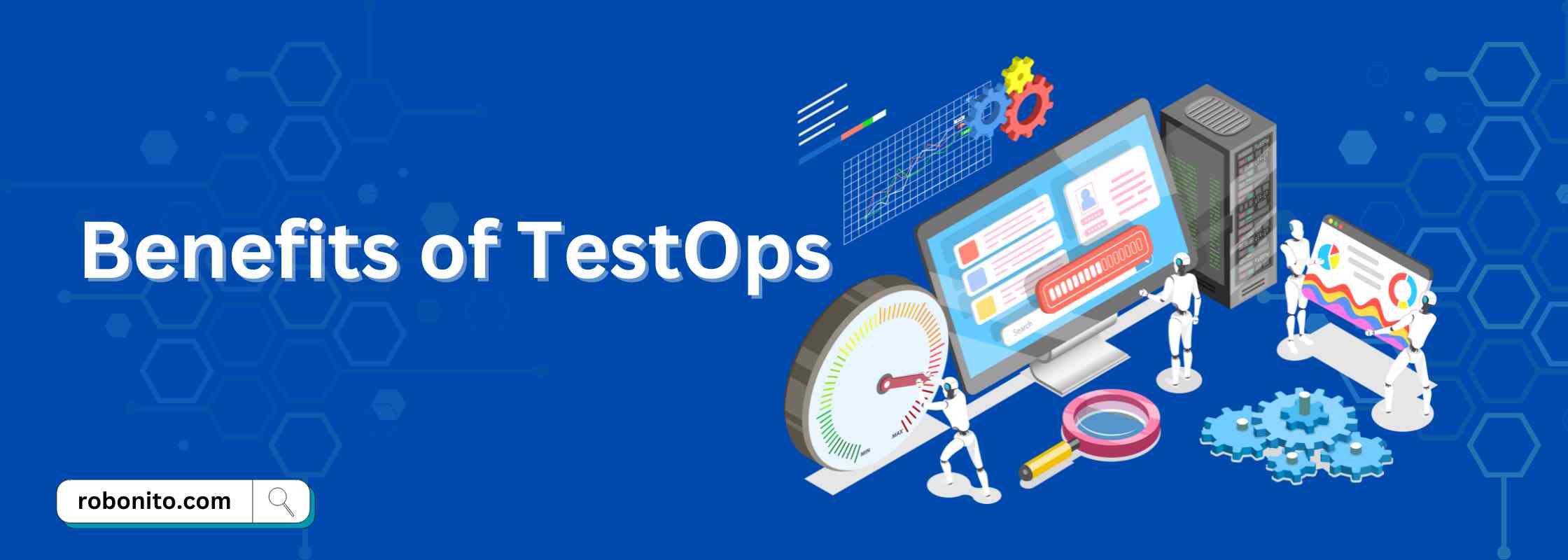
Manage tests efficiently:
Test management is streamlined by TestOps, making it simpler to organize, execute, and monitor tests. It gives test cases a structured repository, making it simpler to arrange, maintain, and update them. This centralization reduces the possibility of test case redundancy or loss, ensuring that testing efforts are coordinated and effective.
Focus on the right tests:
TestOps makes sure that resources are used efficiently by giving priority to important test scenarios. Test case prioritizing features are frequently seen in TestOps tools. They assist teams in determining which tests will have the greatest impact and executing those tests first, ensuring that crucial functionality is adequately tested while conserving time and resources. Better software quality is a result of this emphasis on the appropriate tests.
Increase ROI:
Automation and efficiency lead to a higher return on investment (ROI) in testing efforts.TestOps optimizes testing processes, reducing manual efforts and speeding up test execution. This efficiency leads to cost savings and higher ROI. TestOps catches defects early in the development cycle and minimizes the cost of fixing issues later.
Streamline test execution:
TestOps speeds up test execution and decreases time-to-market for software products.TestOps automates test execution, thereby ensuring that tests always run as expected. Scheduled Automated Scripts — These scripts can be scheduled for the appropriate times within the development pipeline, lessening human involvement and speeding up the testing cycle.
Actionable insights:
Data-based analysis enables testing optimisation by delivering actionable insights and TestOps tools offer comprehensive reporting and analytics functionality. They provide detailed test reports and metrics so that for team can analyze test results properly. These insights provide information on trends, improvement areas, and critical issues that may require quick attention and thus can support data-based decisions.
What Are Some Focus Areas For TestOps?

Version Control:
In TestOps, controlling and tracking changes to test scripts, test cases, and testing resources is known as version control. It makes sure that everyone on the team uses the most recent test assets and enables historical change monitoring, which is helpful for problem-solving and auditing. In dynamic development environments, version control is crucial for preserving test consistency and collaboration.
AI: Machine learning methods are used in TestOps AI to improve many testing features. It has the capacity to forecast potential flaws, prioritize and intelligently pick test cases, and automatically spot trends in test data. Additionally, AI-driven testing supports test automation by recommending test scripts and assisting with test result analysis, ultimately improving testing accuracy and efficiency.
Visualization:

TestOps provides graphical representations of test data and results using visualization tools and techniques. Teams may immediately identify patterns or abnormalities, understand the status of tests, and make data-driven choices with the aid of this visual feedback. Visualizations can include graphs of test coverage or dashboards displaying real-time testing metrics, providing information on the status and effectiveness of testing.
Conclusion: In conclusion, TestOps fills a critical gap in contemporary software development by integrating testing into the DevOps process. Organizations that adopt test operations can reduce costs, accelerate the release of superior products, and gain a competitive edge. It's time to harness TestOps' full potential and transform your testing process.
Therefore, adopting TestOps is the way to go whether you're a developer looking to code with confidence, a tester seeking to streamline your efforts, or a stakeholder seeking to produce releases more quickly and bug-free. It acts as a link between the two processes, resulting in software that not only meets but also exceeds user expectations.
Start transforming your software development process with TestOps today and see the difference it makes. Start on the road to quicker, more trustworthy releases now!
